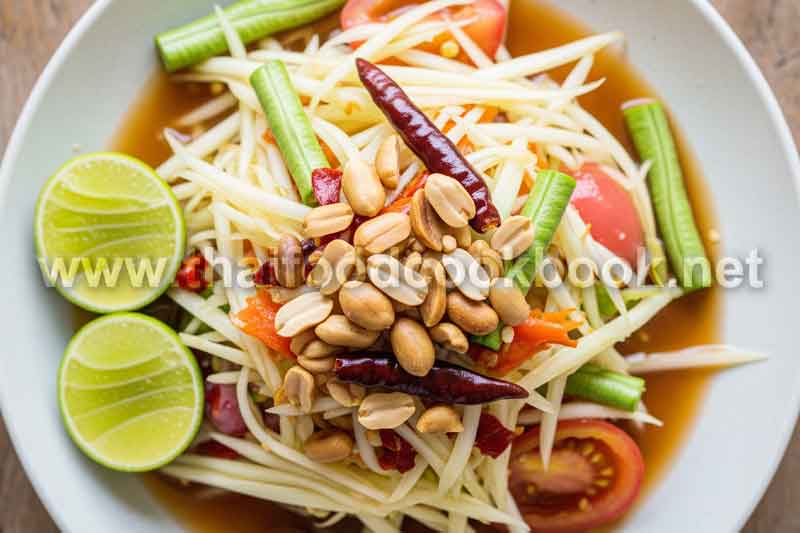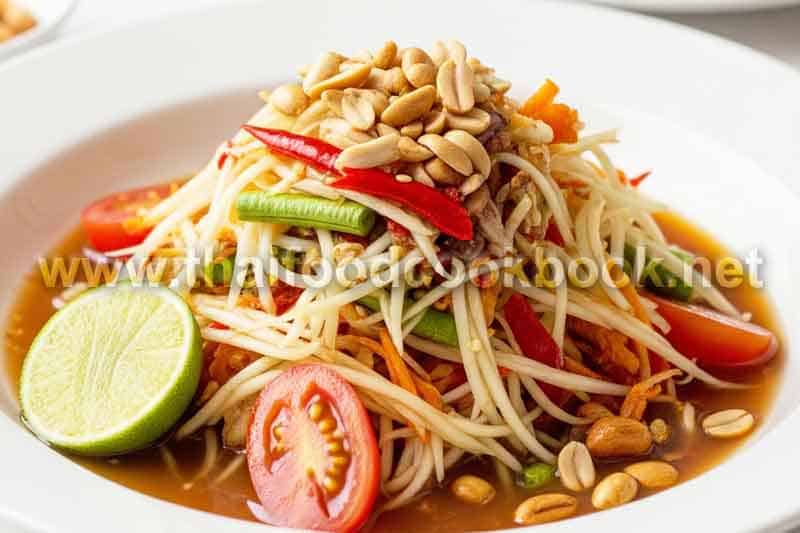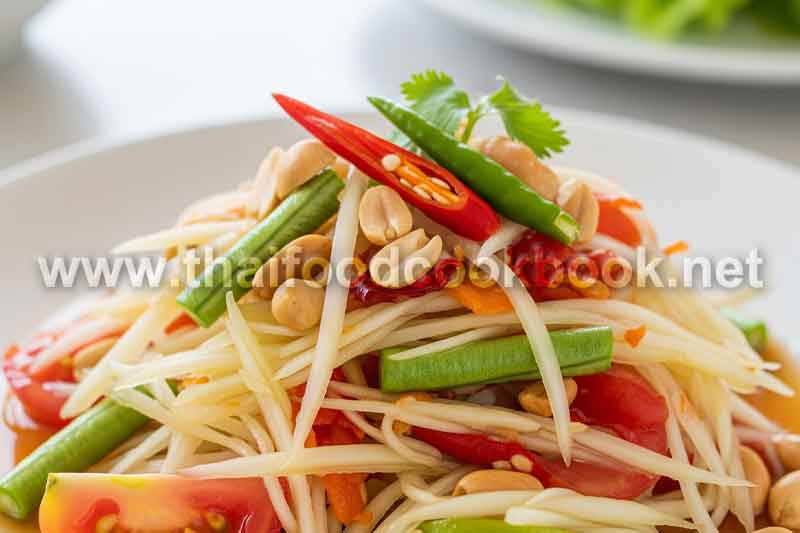Traditional vs Modern Som Tum: Regional Variations from Thailand & Laos
Som Tum, or green papaya salad, is one of the most iconic and beloved dishes in Southeast Asian cuisine. While many international food lovers recognize its spicy, tangy flavors, few realize that Som Tum exists in vastly different forms across Thailand and Laos. The confusion between traditional and modern versions — as well as regional preferences — often leads to questions like: “Why does Som Tum taste sweeter in Bangkok but saltier in Isaan?” or “What makes Lao Som Tum so distinct?” These differences are not simply based on personal taste, but reflect deep cultural, historical, and regional influences. To help you understand and appreciate these variations, this article will explore the core characteristics of both traditional and modern Som Tum, highlight how different regions interpret the dish, and offer insight into how it has evolved over time. Whether you’re a food enthusiast or just curious about Southeast Asian flavors, this exploration of Som Tum will bring you closer to the heart of Thai and Lao culinary identity.
Key Differences Between Traditional Thai Som Tum and Lao Tam Mak Hoong
Although both Thailand and Laos share roots in green papaya salad, the traditional approaches to preparation and flavor are notably distinct. Lao-style Som Tum, known as Tam Mak Hoong, is deeply savory and fermented, using ingredients such as fermented fish sauce (padek), raw crab, and minimal sugar. In contrast, the traditional Thai Som Tum — particularly from Isaan — often balances sweet, sour, salty, and spicy elements more evenly. These contrasts reflect different culinary philosophies:
- Lao Som Tum: Features fermented fish paste, garlic, chilies, and tomatoes; rarely includes sugar.
- Thai Som Tum: Uses fish sauce, palm sugar, lime juice, and occasionally dried shrimp or peanuts for added texture.
- Texture and Preparation: Lao Som Tum tends to be more rustic, while Thai versions are often more polished for restaurant presentation.
Despite their similarities, the two forms are not interchangeable and should be celebrated for their individual complexity and local heritage. Understanding these culinary differences helps bridge cultural appreciation across borders.
Modern Som Tum: Urban Twists and Global Fusion
In cities like Bangkok, Chiang Mai, and even internationally, Som Tum has undergone a modern transformation. Modern Som Tum dishes are often adapted to suit cosmopolitan palates and Instagram-friendly aesthetics. Ingredients such as avocado, salmon, corn, and even spaghetti have been creatively infused into this once humble dish. These interpretations maintain the dish’s vibrant spirit but diverge from its original context.
Some examples of popular modern Som Tum styles include:
- Som Tum Thai with Salted Egg – A richer and creamier twist with added protein.
- Fusion Som Tum with Seafood – Combining shrimp, squid, or scallops with international sauces.
- Vegetarian or Vegan Som Tum – Skipping the fish sauce in favor of soy or tamari for wider dietary appeal.
This evolution speaks to the globalization of Thai cuisine and the creative ways chefs reimagine traditional recipes. While purists may frown upon the fusion trend, many modern diners find these variations exciting and approachable. You can find a growing list of these creative versions in global Thai restaurants and even home cooking blogs that celebrate international cuisine.
Regional Flavors Across Thailand and Laos
Thailand and Laos both have diverse internal regions, each with its own spin on Som Tum. Even within Thailand, a plate of Som Tum in Bangkok is quite different from one served in Ubon Ratchathani or Chiang Rai. These variations reflect not only taste preferences but also ingredient availability and local traditions. Here are some regional interpretations:
- Central Thailand (Bangkok): Som Tum Thai is lighter, sweeter, and often includes peanuts and dried shrimp.
- Isaan (Northeastern Thailand): Som Tum Poo Pla Ra includes fermented fish sauce and raw field crab for a bolder taste.
- Northern Thailand (Chiang Mai): Incorporates local herbs and often serves Som Tum as part of a shared platter with sticky rice and grilled pork.
- Southern Laos (Savannakhet): Tam Mak Hoong is deeply fermented with more chili and garlic intensity.
Understanding these regional preferences gives deeper insight into how local culture shapes food. It also highlights why the same dish can taste so different depending on where you are, even within the same country.
Preserving Culture Through Som Tum in a Modern World
As globalization continues to reshape the way we eat, it’s important to preserve the cultural roots of traditional dishes like Som Tum. While modern versions serve a purpose — making the dish more accessible — traditional Som Tum offers a living connection to local identity and generational cooking. Food tourism, regional food festivals, and educational culinary programs have helped reinforce the importance of preserving heritage flavors.
If you’re looking to experience both sides of this culinary coin:
- Seek out local markets and street vendors for authentic, traditional Som Tum experiences.
- Try modern Som Tum variations in urban restaurants to see how chefs are innovating the classic dish.
- Join cooking classes that specialize in either Lao or Thai Som Tum to learn about the preparation and ingredients firsthand.
Whether you favor the strong umami of fermented Lao Tam Mak Hoong or the well-balanced flavor of Som Tum Thai, appreciating both allows for a more comprehensive understanding of Southeast Asian food culture. As Som Tum continues to evolve, it offers a lens through which to examine culinary tradition, identity, and innovation all on one plate.
Conclusion: Embracing the Diversity of Som Tum
Som Tum is not just a salad — it’s a story of migration, identity, adaptation, and flavor. From the fermented bowls of Tam Mak Hoong in Laos to the sweet-and-sour Som Tum Thai served in Bangkok cafes, each variation tells a regional tale. In understanding traditional vs modern Som Tum, we not only explore the flavors but also honor the people and places behind them. If you’re passionate about Thai and Lao cuisine, or want to deepen your knowledge of regional food traditions, start with Som Tum — a dish that offers more than just a bite, but a rich history worth savoring.


